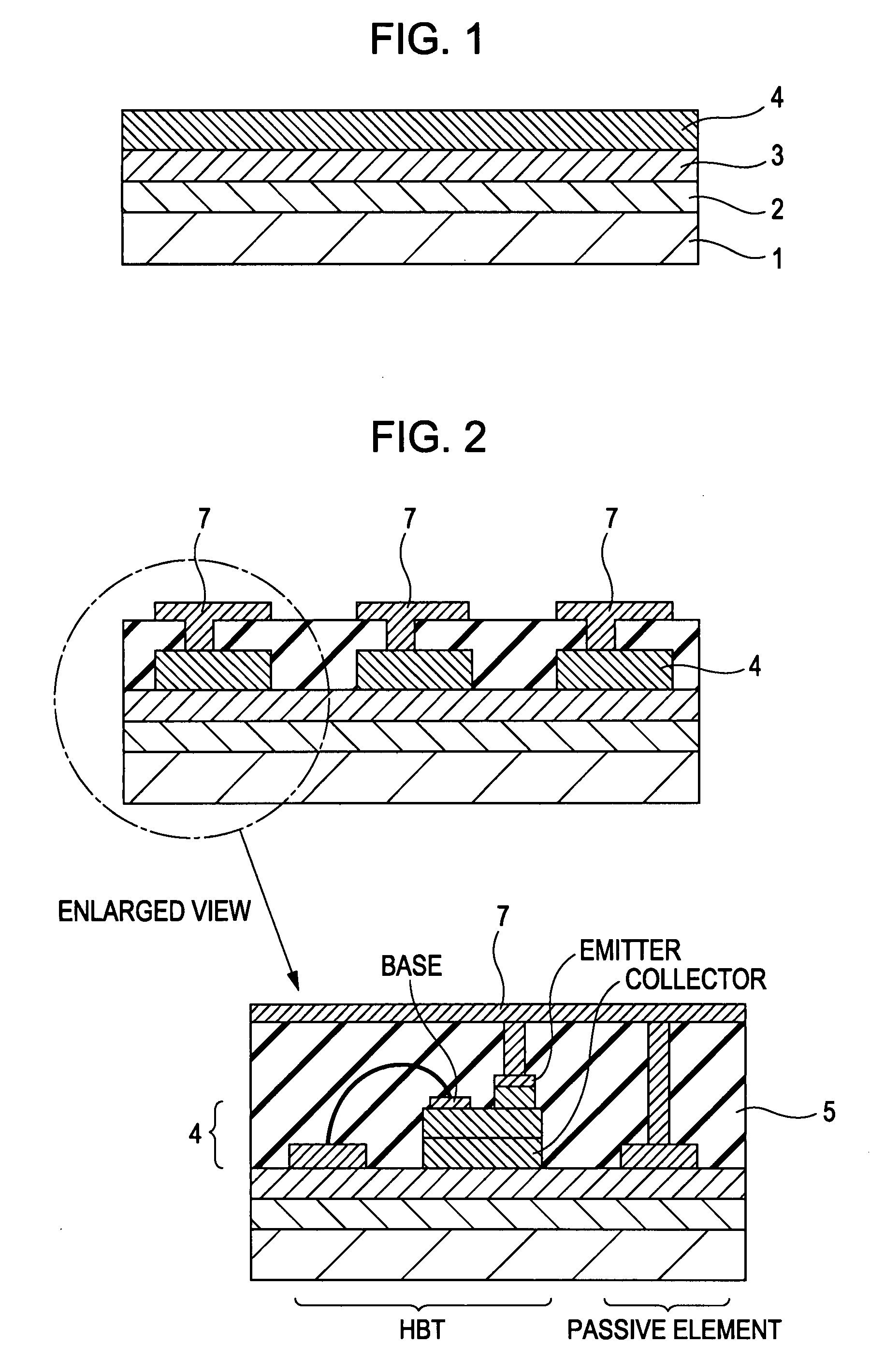Method for producing semiconductor device
- Summary
- Abstract
- Description
- Claims
- Application Information
AI Technical Summary
Benefits of technology
Problems solved by technology
Method used
Image
Examples
Embodiment Construction
[0044]In a method according to an embodiment for producing a semiconductor device, monolithic microwave IC (MMIC) chips each including a high-In-content device produced by epitaxial lift-off (ELO) are exemplified. The method according to this embodiment for producing the MMIC chips has the following advantages.
1. A device layer is separated from a substrate by ELO to form MMIC chips.
[0045]2. Grooves which are in the form of a grid and which are each located between adjacent chips are formed in the device substrate side before the device substrate is bonded to a supporting substrate. The grooves in the form of a grid function as inlets for an etching solution that etches a sacrificial layer during the subsequent ELO step. In the ELO step, the penetration of the etching solution through the grooves results in the rapid completion of etching of the sacrificial layer.
3. The device layer is transferred to the supporting substrate while chip arrangement on the device substrate is maintain...
PUM
 Login to View More
Login to View More Abstract
Description
Claims
Application Information
 Login to View More
Login to View More - R&D
- Intellectual Property
- Life Sciences
- Materials
- Tech Scout
- Unparalleled Data Quality
- Higher Quality Content
- 60% Fewer Hallucinations
Browse by: Latest US Patents, China's latest patents, Technical Efficacy Thesaurus, Application Domain, Technology Topic, Popular Technical Reports.
© 2025 PatSnap. All rights reserved.Legal|Privacy policy|Modern Slavery Act Transparency Statement|Sitemap|About US| Contact US: help@patsnap.com



